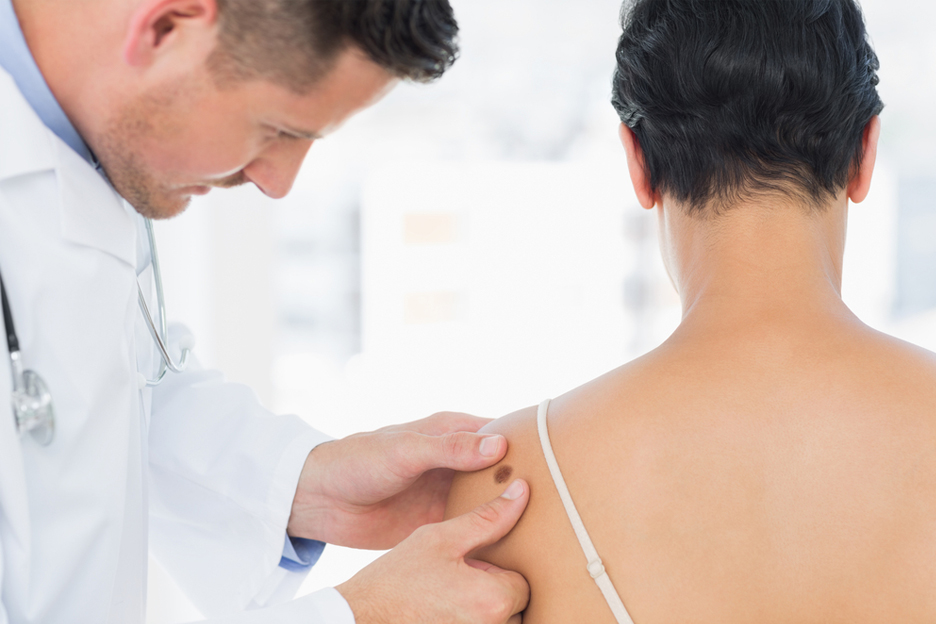Cancer is a disease that has a profound effect on the sufferer, as well as all of her or his loved ones. Did you know that it can target the human body’s largest organ, the one that covers and protects us? Learn how to prevent and detect skin cancer.

A few facts
Every day, your skin falls prey to all kinds of attacks. And every day, without you even realizing it, it protects you from these aggressions. What if you protected it in return to avoid a suspicious lesion and the stress it could cause?
Comparatively to other types of cancer, we don’t hear that much about skin cancer. However, each year nearly 90,000 Canadians are given a diagnosis of skin cancer. And unfortunately, the number of cases increases annually.
There are two types of skin cancers:
- Non-melanoma: The most frequently diagnosed, it causes very few deaths.
- Melanoma: Not as common, but dangerous. When detected early, however, it has one of the highest rates of recovery of all cancer types (90%).
Skin cancer can present in various ways: bump, patch or sore, for example. Consult a doctor for any type of lesion that does not completely heal within four weeks. Skin cancer often appears in areas of the body that are exposed to the sun, such as the face, neck, back and legs. But it can still develop elsewhere on the body, so always keep an eye out.
Risk factors for skin cancer
One of the main causes of skin cancer is well known: exposure to the ultraviolet (UV) rays of the sun and/or the tanning salon.
Some people are at higher risk of developing skin cancer, such as those who have:
- fair skin, freckles, red or blond hair, blue, grey or green eyes;
- a personal or family history of skin cancer;
- a high number of moles or irregularly shaped moles;
- a history of sunburn.
How to prevent skin cancer
There are several simple and accessible ways to minimise the risk of skin cancer:
- Protect your skin from the sun; stay in the shade and wear a large-brimmed hat.
- Apply sunscreen with an SPF of at least 30.
- Apply sunscreen at least 20 to 30 minutes before you go out in the sun.
- Reapply sunscreen every two hours and after swimming.
- Avoid tanning salons. Tanning beds are just as dangerous as the sun and should never be used.
- Examine your skin once a month.
Examining your skin thoroughly once a month is an excellent preventive habit to add to your routine. You can do it yourself with a mirror or ask a family member to examine your skin with you. Doing it with someone else will allow the person to see some areas that are harder to access, such as the back and shoulders. You must learn to observe and take note of anything new or different on your skin and moles.
Here is a simple “ABCDE” trick to remember what to look for on your moles:
- Asymmetry: difference between both sides of the mole;
- Border: blurry or jagged edges;
- Colour: variations in colour;
- Diameter: increasing in size over time;
- Evolution: changes in appearance.
A “good ole” sunburn can suddenly seem much less trivial when you realize it might cause, even several years after the fact, skin cancer. Beware of the sun. In addition, it is important to keep focusing on prevention, for both children and adults. And finally, be proactive and learn to know your own skin; early detection of skin cancer is the key to high chances of recovery. Your skin is your birthday suit; it deserves all of your attention!